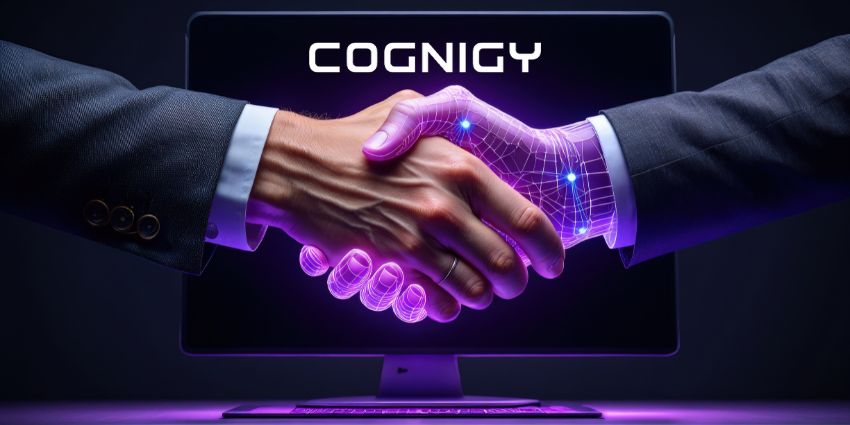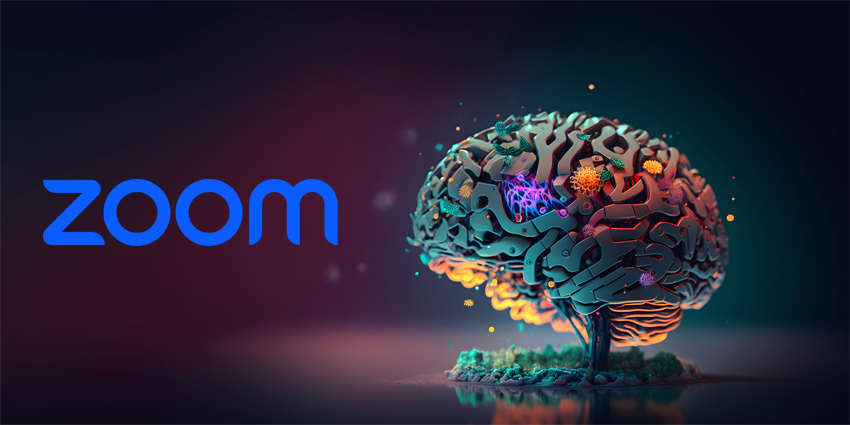Slowly but surely, AI is making its mark on the contact center and changing how agents work.
From how they access support information to how they schedule their shifts, it’s impacting almost every aspect of their working lives.
In a recent Calabrio webinar – “How to Activate the Agent of the AI-Fueled Future” – the following three contact center pros delved deeper:
- Ed Creasey, Director of Pre Sales at Calabrio
- Juanita Coley, CEO & Founder of Solid Rock Consulting
- Matt Agone, Data Science Manager at Paychex
In doing so, they pinpointed several megatrends and used data from a recent study – entitled: “State of the Contact Center 2023” – to explore how AI could impact the contact center agent role.
Here are five excellent examples that leaped out from the discussion.
1. Real-Time Support Revitalizes Remote Working
For most, the pandemic-enforced switch to remote working seemed a significant success – at first.
Yet, once the novelty wore off, reports of stuttering employee performance and businesses dragging teams back to the office hit the headlines.
Now, only 49 percent of managers believe remote workers are meeting productivity expectations. That’s 24 percent lower than in 2020.
Making note of this trend, Agone admitted: “The so-called “work avoidance” behaviors seem to creep in more when employees are working from home.”
Fortunately, AI now spots many of those “work avoidance” behaviors and engages with agents to pull them back on track.
Nevertheless, Agone and many other contact center leaders are unsure whether to implement such technology, afraid of policing labels.
“Many people seem more concerned with AI than excited by it,” added Creasey. “They think it’ll become a policing tool, a fear that dates back to the early days of speech analytics.
“I once stood at a police headquarters in 2007 and assured them it wasn’t a policing solution – and it didn’t go down very well.”
Yet, while acknowledging these concerns, Creasey underlines how the tool is – at its core – a force for good – especially in supporting the mental health of agents.
For instance, it can flag remote agents who are coming under massive pressure and trigger a supervisor intervention. “That’s gaining great momentum,” confirms Creasey.
However, the success of such use cases ultimately comes down to how the contact center frames them. By working with agents from the get-go, addressing concerns, and pinpointing the benefits ahead of time, they are more likely to gain buy-in.
2. Critical Thinking Becomes a Must-Have Skill
AI is replacing many of the tasks that agents are good at today, and that’s not a coincidence. After all, AI learns the optimal way teams complete tasks.
However, there is a flip side. As Agone stated:
“When it comes to problems that have not cropped up before, AI won’t deal with it. It doesn’t have that critical thinking capability. We’ve all seen the memes of AI not behaving well.”
Here’s a fun example of one such meme:
Yet – getting back to more serious matters – as AI cannot engage in critical thinking, it has become an evermore valuable skill for contact center agents.
Indeed, the Calabrio study found critical thinking, adaptability, and the ability to continuously learn are the top agent skills for the future – and the most lacking today.

Sharing an example of why such nuance of thought is crucial, Creasey mentioned his experience with a GenAI-powered contact auto-summarization tool.
“I was using the solution on an escalated contact, where the customer gradually became more angry until the contact ended,” he said.
“It was a 20-minute call, and the tool did a great job of noting what had happened in five or six sentences. But, what it didn’t note was that the customer was very agitated, may become a repeat contact, and is likely to file a complaint. In those details, humans make the difference.”
Interestingly, this example highlights how agents add value – not only in handling the more complex queries – but in assuring the quality of AI-generated content.
Such examples where AI is becoming the agent’s assistant or “copilot” is where much of the future value of AI in contact centers lies.
3. Rewards & Recognition Gains a New Lease of Life
Sharing a top tip for attracting and retaining agents, Coley declared: “Death to the pizza party!”
In making this point, she suggested that when a service leader places that same old take-out order each time demand rises, it no longer becomes an incentive; it’s an expectation.
Moreover, Coley noted:
“Some employees will say: instead of buying me pizza, pay me. Put that money into my end-of-year bonus. Listen to me. Treat me like an adult.”
Agone builds on this point. He suggests that everybody has different motivations – and AI can help to spot these.
For instance, contact centers can see how various incentives drive performance at an individual level and use that insight to build personalized reward programs.
Yet, he caveats that with a warning: “Ethics needs to be at the heart of these use cases because otherwise, reward and recognition may become unfair, and AI will compound those injustices if we let it.”
As such, businesses should apply AI cautiously. They mustn’t unconsciously apply bias; AI should take it away, as it has helped to do in recent years with the rise of Automated Quality Management.
“Just think back to the old days of manual agent evaluations,” said Creasey. “Remember how unfair that was? How a supervisor just happened to pick that call or email to reflect on.
“It was also bad for the supervisor. They may want to make a point, but the agent may say: “That’s the one time it happened,” and you couldn’t prove it otherwise.”
Yet, now AI helps to flag calls, pinpoints best practices, and embeds fairness into the process.
4. AI Joins Workforce Management and Quality Assurance at the Hip
Contact center virtual assistants long outdate the advent of Microsoft Copilot. Consider Calabrio’s Grant bot, which agents can leverage for various tasks, such as booking voluntary time off (VTO), paid time off (PTO), and shift swaps.
Yet, these use cases are expanding, and Creasey suggests the next frontier is allowing agents to build their shifts with AI guidance – and the possibilities don’t end there.
“I think it’ll then go a step further, towards combining the analysis of an interaction and the ability to schedule,” he said.
“Maybe AI can spot an agent behavior – such as talking over someone or low sentiment – and maybe that could inform the schedule, so they receive a “respite shift”. It’s in that kind of use case where AI will get very interesting.”
Consider how quality assurance may also enter the fray, with AI spotting performance trends such as when in the day individual agents typically perform at their best or start to flag. Incorporating those insights into shift planning and break optimization initiatives may help lift agent performance.
Another example is using AI to split contacts between intent. Planners can then see which contact reasons agents typically handle best and offer them more shifts at times when those often flood into the contact center.
Such use cases highlight how AI may further benefit workforce engagement initiatives by pulling the two conventionally separate functions together.
5. Micro-Training Becomes Trendy Again
According to the Calabrio survey, almost all contact center managers felt their environment provided enough (71 percent) or somewhat enough (26 percent) opportunities for agent training.
Yet, fewer than half of all managers actively pursue various types of coaching.
Coley sees a disconnect here. “The companies that get training right are those that leverage micro-training, breaking big concepts into various micro-formats – and re-affirming important concepts,” she said. “Why? Because learning comes through repetition.”
AI may help here. Coley continued:
“Consider agent scheduling and how AI may use real-time traffic data to spot quiet periods and trigger learning breaks.”
However, this still builds on a relatively old concept. A more divergent use case is agent-assist models, which pop up answers on the screen for reps during live conversations.
Coley refers to this as “just-in-time training”, suggesting that the solution helps to embed answers into the agent’s subconscious.
That, alongside increased micro-formats for training – possibly including auto-recommended best-practice call listening – shows how training programs may grow new arms and legs.
Yet, Creasey urges caution with the just-in-time training use case. “There’s nothing worse for agents than death by pop-up, especially if it’s not the right pop-up at the right time,” he concluded.
Get Ahead of the Curve with Calabrio
AI offers many opportunities to drive positive agent, customer, and business outcomes.
Yet, for contact centers to receive the optimal bang for their buck, contact centers must implement AI with caution.
If not, they may introduce bias into WEM processes, bring new complexities into the agent role, and fall for unfortunate trends such as the so-called “death by pop-up.”
Thankfully, leading WEM vendor Calabrio has its feet firmly on the ground, working closely with customers and bringing AI into their service environments at a speed best-suited to them.
In doing so, they can get ahead of the AI curve while optimizing contact center outcomes.
Read the full research report here. Or, to learn more about Calabrio’s platform and vision, check out the WEM leader’s website.








